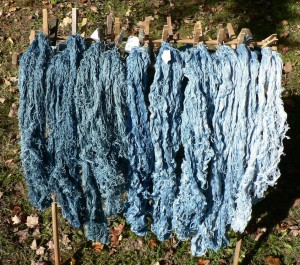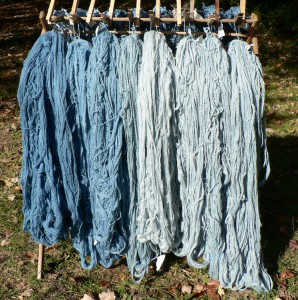Where I live in Massachusetts, our first frost is usually the first or second week of October. I feel like it has been creeping later and later in recent years, but tonight (Friday October 12th) our forecasted low is 25 degrees. I always find the first frost to be a bitter-sweet moment in the gardening year. By the time it comes, Matthew and I are usually up to our eyeballs in chilis and tomatillos, there is no room in the fridge, and we are sick of watering and weeding and squishing bugs and trying to defend beets, corn, pumpkins, or what-have-you from unknown assailants…. So, part of me is usually ready for the garden to be done, and to shift my focus to other labors. On the other hand, it is very hard to let go of the potential of those sweet little flowers on the chili plants that will never mature, all those cosmos and marigold buds that will just shrivel and get squishy, all that fragrant basil that will turn black and limp…. OK, I know, a frost is nothing out of the ordinary, but at the same time it is an abrupt, violent interruption. Part of me fights the shift from one season to the next, one phase of life to another. We cover plants, bring them indoors, put them in the car, bring them to work, and in every way attempt to nurse them along and fight the future.
Death is a difficult, painful reality to accept, and part of me always resents it, denies it, opposes it, and tries to fend it off as long as possible. But blankets and sheets can only protect so much. I always think of the fragment from Sappho (Mary Barnard translation, 1958):
We know this much:
Death is an evil;
we have the gods’
word for it; they too
would die if death
were a good thing
Happily, being a brassica, woad is actually pretty frost tolerant and I have gotten good color from woad even after a few frosts. Nonetheless, knowing that the end was nigh for the garden, on Monday I took advantage of a day off work, and ran what will likely be my last woad vat of the season.
All went well (yes, I remembered to aerate and no I didn’t take any photos). I used a little more than 8 pounds of fresh leaves and dyed nearly 4 pounds of yarn (cotton, linen, alpaca, and wool). I even came across two cold snakes snuggled in the woad beds as I was harvesting, which seemed auspicious. I have run out of pH strips and haven’t got my act together to acquire more. So, this time I relied on the quantity it had taken me in the past to get the pH I want, plus the remarkable and distinctive color shift from black cherry-red to sea-weed green when the pH is right. And it all went fine.
Here’s a photo of the cellulose yarns I dyed on Monday (dried, rinsed, then dried again), and below are the protein yarns:
I did my regular chemical vat, which is arguably and admittedly not “natural” in the strictest sense since I use ammonia to get my pH up high, and either sodium hydroxide or thiourea dioxide to reduce the vat (RIT Color Remover in this case). Despite the chemicals, I like my method because it is very reliable and I can do a vat in one day, even in these autumnal days of less sunlight and cool weather. However, I have intended for years to become more skilled in some of the slower, more natural fermentation vat methods. The ones I have tried–a urine vat with a fresh woad leaf extraction and a yeast fermentation vat with powdered indigo–have had comparatively little success.
In the interests of mastering fermentation vats, I was excited to take the workshop with Jane Woodhouse on “Greener Indigo” at the Vermont Sheep and Wool Festival on September 30th. Plus it was a great excuse for a road trip with knitter, weaver, and farm-to-fiber organizer Liz Sorenson (if you like to knit, check out her classes at Metaphor Yarns!) (12/24/2023 Edited to add that Metaphor Yarns is no longer in business, but you can still take a class with Liz at the Hill Institute in Florence, MA).
My main question was, can you really pull off a fermentation vat in a three hour workshop? And the answer was no, which wasn’t all that surprising. But Jane showed us how to make an indigo vat with fructose and slaked lime, and we all dipped our samples in a vat that she had made a few days earlier. That is the thing about fermentation: it takes a few days and it needs to be pretty warm. Not hot, but not 25 degrees at night. Talk about nursing things along…. You would think I would have more patience with a fermentation vat, but to be fair to myself I feel like I have plenty of patience; the road blocks are more about space, warmth, time, and stench, not patience per se. Anyway, fermentation vats and me still have a ways to go.
During the workshop, a fascinating thing occurred. Two participants had brought wool yarns dyed with dahlias, one with a fine yarn and one a little bulkier. They were both warm yellows, on the red side of yellow. Very lovely. One woman dipped hers in the vat, and instead of the expected green or even olive green, it became a bright rusty orange-brown. Hmm, we all said. Dahlias must be pH sensitive. Very fortunately we could repeat the experiment with the other woman’s skein, and lo and behold the same thing happened. No green, just bright rusty orange. Getting a consistent result with a repeated experiment is always affirming (and/or annoying). I have often been frustrated with unsuccessful attempts to make green on cellulose yarns, trying to overdye a yellow with woad, but never on wool. Wool always seemed foolproof to me (fortunately). So, I’ve been thinking about pH, the interactions of fiber and dyestuff, and what on earth could be going on when everything seems all set pH-wise and reduction-wise in an indigo or woad vat, but you still don’t get green.
So, I pondered these questions in the back of my mind for a week. No great strokes of genius came to me. BUT… when I was rinsing the cellulose skeins after my woad vat, much, much more blue was rinsing off of the cellulose yarns than the protein. Agonizing. Nobody likes to see all their hand-won blue rinsing down the drain at the best of times, and cellulose yarns are harder to dye than protein to begin with, so they always come out lighter.
Then I had a thought. A pH thought. I always do a vinegar-solution rinse for protein fibers after a strong alkaline dye bath/vat because protein fibers are weakened by alkalinity. I have not felt that this step was as important for cellulose fibers because they are much more tolerant of alkalinity. Here is my thought:
What if the problem wasn’t the fiber, but the dyestuff? So, I submerged the cellulose yarns in a vinegar solution as well. Ta da! Much less blue run-off.
So, my theory is that the form of the indigo molecule that is water-soluble at a high pH stays water soluble even in a neutral water rinse. I think you really have to get the pH down way below neutral to change that. Lowering the pH makes the molecule less soluble, so it sticks to whatever it’s next to. From now on I plan to always do a vinegar-solution rinse as the first rinse, even on cellulose, to render the indigo molecule insoluble again.
If there are any dye-chemistry whizzes reading this, please let me know if my chemistry is crazy.
Everything fades and dies eventually, but maybe vinegar can help keep my cellulose yarns blue. Happy first frost.


